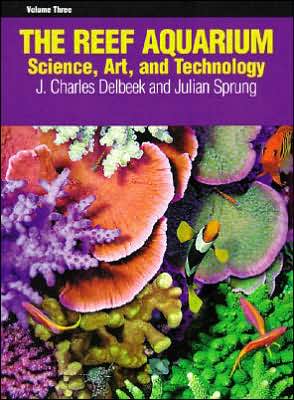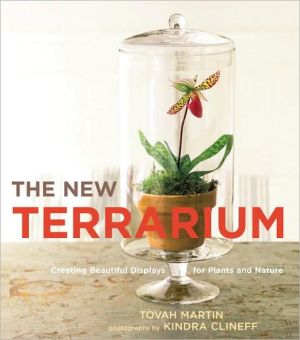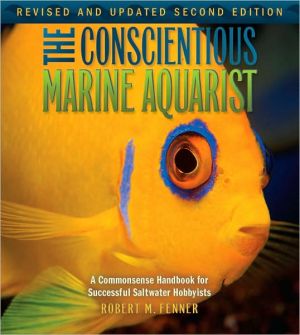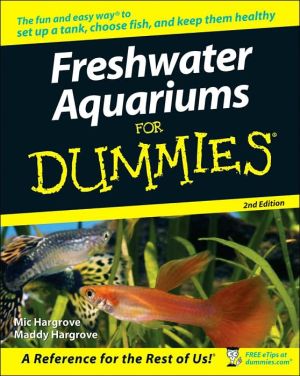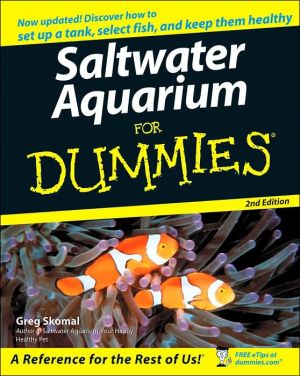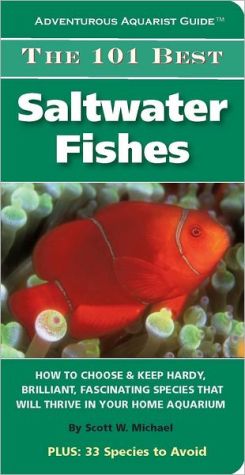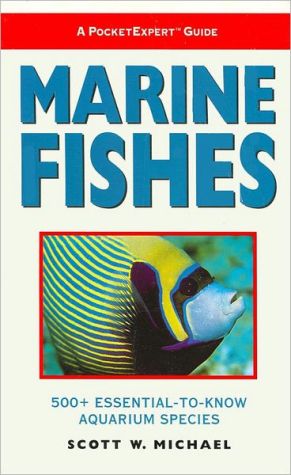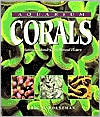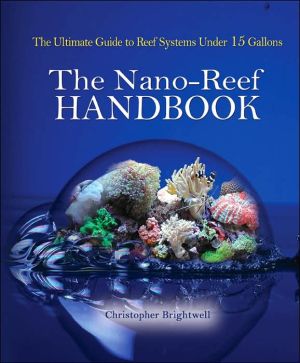Reef Aquarium Volume Three: Science, Art, and Technology
Reefkeeping science involves the interplay of biology, chemistry, and physics. However, a reef aquarium is not simply a product of scientific knowledge. The application of engineering and its product technology, makes it possible to duplicate the specific biological, chemical, and physical requirements of a coral reef in a relatively small volume of water. This third volume in The Reef Aquarium series, provides the most thorough description of the science behind the creation of a captive...
Search in google:
Reefkeeping science involves the interplay of biology, chemistry, and physics. However, a reef aquarium is not simply a product of scientific knowledge. The application of engineering and its product technology, makes it possible to duplicate the specific biological, chemical, and physical requirements of a coral reef in a relatively small volume of water. This third volume in The Reef Aquarium series, provides the most thorough description of the science behind the creation of a captive reef, and critically reviews and explains the different philosophical approaches to reef aquarium design. It also describes and illustrates the existing as well as emerging technology for building reef aquariums, to help guide the selection of equipment, its proper use, and installation. While science and technology afford the blank canvas and tools to build a suitable life support system, the plants, animals, and of course the aquarist provide the final ingredient that we call art. This art also involves the system design as it relates to the living space, the aesthetic appearance of the display, and its ease of maintenance, safety, and functionality. To this end, this book provides a wealth of information regarding aquascaping techniques, which combine art, biology, and physics; and invaluable information regarding plumbing, electrical, and other aspects of the aquarium design that combine art and engineering. Lastly, this book discusses the benefits and potential environmental impacts of the marine aquarium hobby, the challenges for its future, and possible new directions. The Reef Aquarium volume three is the essential manual for all reef aquarium hobbyists, professional aquarists, and coral reef researchers who study, create, and enjoy coral reef ecosystems in the confines of an aquarium.
Acknowledgements6About the Authors7Introduction8Chapter 1The Basics of Aquarium Selection and Design32The Aquarium33Preparing the Aquarium41The Overflow43The Sump50Aquarium Location52Physical Considerations52Biological Considerations57Cleaning the Aquarium59Chapter 2Common Elements60Water61Live Rock67The Bottom Material74Chapter 3Plumbing and Electrical82Plumbing83Piping and Tubing84Fittings88Valves100Pump Selection103Planning the Design116Testing the System121Electrical Do's, Don'ts and Considerations121Chapter 4Physical & Chemical Parameters of Reef Aquarium Water132Temperature133Gas Exchange154Specific Gravity160Salinity164Electrical Conductivity167pH168Alkalinity170Calcium173Magnesium173Ammonium and Nitrite175Nitrate175Phosphate176Trace and Minor Elements179Vitamins192Filtration and other affects on trace elements192Redox194Dissolved Organic Matter196Turbidity197Chapter 5Calcium, Alkalinity and pH Maintenance198Where does all th0e Calcium Carbonate Go?200Calcium202Alkalinity205How to Supplement Calcium and Alkalinity206Methods Used for Raising the Calcium and Alkalinity Levels in an Aquarium207Other Calcium and Alkalinity Sources229Solving Calcium, Alkalinity and pH Problems233Chapter 6Filtration246Mechanical Filtration247Surface Skimming248UV Sterilizers250Biological Filtration254Fluid Mechanics and Biological Filtration261Nitrifying Filters268Denitrifying Filters272Assimilatory Reduction of Nitrate274Substrate Filtration Principles286Refugia288Chemical Filtration296Protein Skimming308Natural Systems333Eng's Natural System333Jaubert's Monaco System337Deep Sand Bed (DSB) Filtration361Berlin Method367Algal Turf Scrubbers (ATS) and Microcosm Management371The Ecosystem Aquarium aka.the Miracle Mud Method385Cryptic Sponge/tunicate EG zonal Filtration397Natural Systems - Final Thoughts400Chapter 7Water Motion402Types of Water Motion403The Role of Water Motion404Water Motion and Coral Placement407Accessory pumps and flow enhancing devices408Wave-makers, Rotating Returns and Current Switchers417Surge Generators424Tidal Systems438Chapter 8Lighting442Orientation of Marinelife444Skylight versus Sunlight444Total Light Received by the Aquarium445Ultraviolet (UV) Light453Lighting Parameters456Types of Lighting Systems465Light Fixture Orientation471Reflectors472Ballasts478Lamp Types483New Trends in Aquarium Lighting499Coral Colour507Response of Coral to Artificial Lighting516Chapter 9Aquascaping520Design Considerations521Use of Aquarium Backgrounds528Hiding Equipment534Model Building535Live Rock536Other Options - Alternatives to Live Rock540Materials that Facilitate Reef Construction549Using Sand Beds for Aesthetic Purposes564Chapter 10Foods and Feeding568Fish Foods569Invertebrate Foods and Feeding573Feeding Challenges591Chapter 11Maintenance, Husbandry and Disease Issues598Keeping a Log599Integrated Controllers600Maintaining Calcium Reactors601Lighting Maintenance602Tank Maintenance605Plumbing Maintenance612Pump Maintenance613Changing Activated Carbon and Other Media615Cleaning the Protein Skimmer616A Clean Sweep- The Use of a Cleanup Crew618Coral Harvest/Pruning640Old Tank Syndrome641Disease645Parasitic Crustaceans648Long Term Puzzling Problems with Corals653Probiotics, Predatory Bacteria, and Bacteria Phages654Future Disease Treatment Options655Designer Corals655What's Next? Reef Aquarium Maintenance in the Future656Bibliography658Index672
